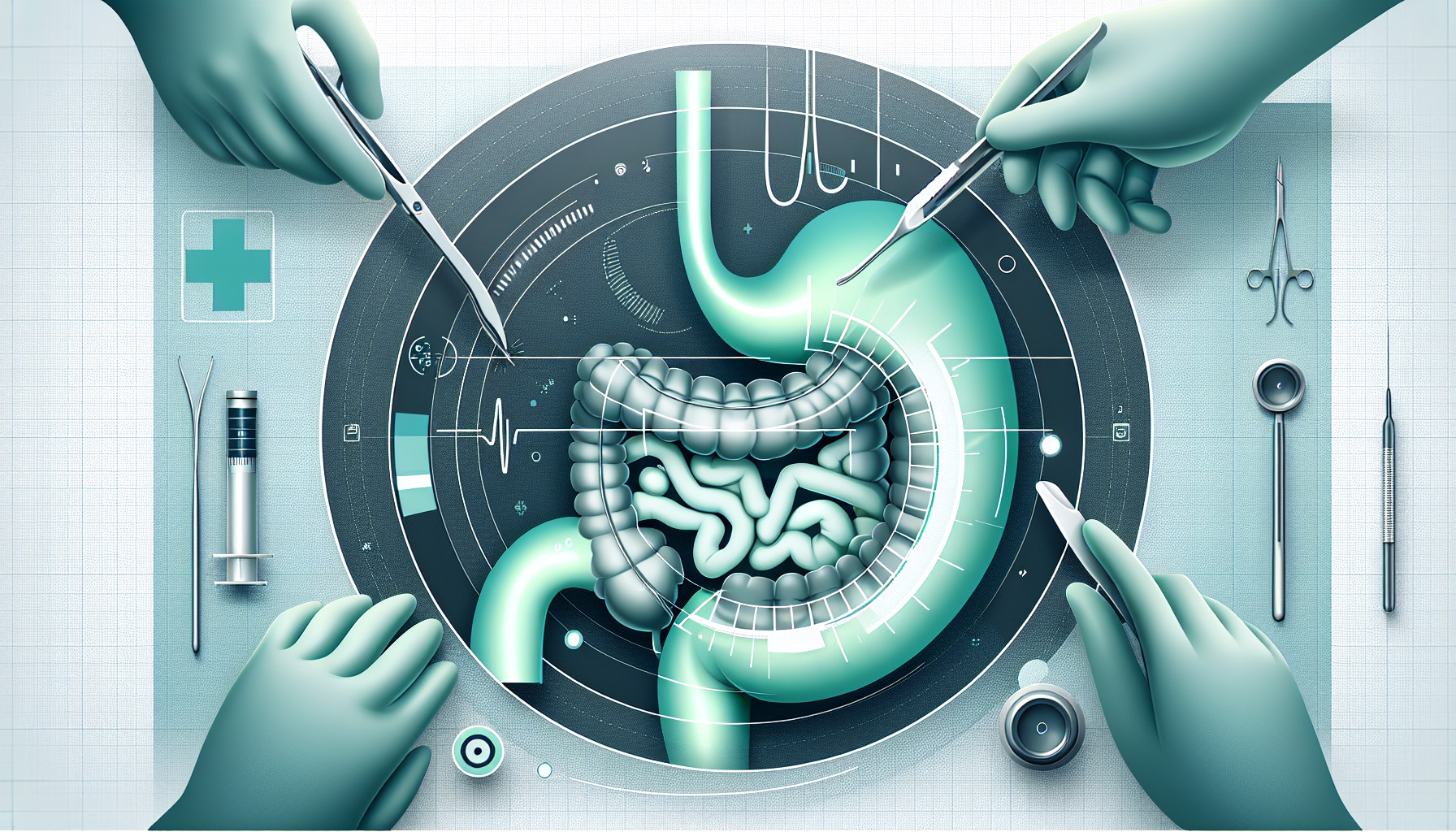Our Summary
This research paper discusses the challenges of a medical procedure called endoscopic retrograde cholangiopancreatography (ERCP), especially after someone has had a specific type of weight loss surgery known as Roux-en-Y gastric bypass. This surgery changes the anatomy of the digestive system making the ERCP procedure more difficult.
Doctors have tried two ways to perform ERCP in these patients. One method is laparoscopy-assisted ERCP, which although has high success rates, can lead to longer hospital stays and increased risks of complications. The other method is enteroscopy-assisted ERCP, but it has technical challenges and lower success rates.
The researchers propose a new method called endoscopic ultrasound-directed transgastric ERCP. This technique uses a special metal stent, a small tube, to create a connection between two parts of the stomach. This allows the ERCP to be performed more easily. However, this method can also have complications such as perforation, stent migration, bleeding, and the persistence of the created connection.
FAQs
- What is the purpose of endoscopic ultrasound-directed transgastric ERCP in gastric bypass patients?
- What are the common adverse events associated with EUS-directed transgastric ERCP?
- How does the success rate of laparoscopy-assisted ERCP compare to enteroscopy-assisted ERCP in gastric bypass patients?
Doctor’s Tip
One helpful tip a doctor might tell a patient about gastric bypass is to make sure to follow a strict diet plan and attend regular follow-up appointments to monitor progress and address any potential complications. It is also important to stay hydrated, take prescribed medications as directed, and engage in regular physical activity to support weight loss and overall health. Additionally, patients should be aware of the potential risks and complications associated with gastric bypass surgery and seek immediate medical attention if they experience any concerning symptoms.
Suitable For
Patients who are typically recommended gastric bypass surgery include those who have a body mass index (BMI) of 40 or higher, or a BMI of 35 or higher with obesity-related health conditions such as type 2 diabetes, high blood pressure, or sleep apnea. Candidates for gastric bypass should have tried unsuccessfully to lose weight through diet and exercise, and be committed to making lifestyle changes post-surgery. Additionally, patients should be in good overall health and psychologically prepared for the challenges of the procedure and recovery process.
Timeline
Before gastric bypass:
- Patient undergoes extensive consultation and evaluation by a multidisciplinary team including a surgeon, dietitian, psychologist, and other healthcare professionals.
- Patient undergoes pre-operative testing and preparation to ensure they are a suitable candidate for surgery.
- Patient may be required to follow a specialized diet and exercise regimen to prepare for surgery.
After gastric bypass:
- Patient undergoes the surgical procedure, which involves creating a small pouch from the stomach and rerouting the intestines to limit food intake and nutrient absorption.
- Patient experiences post-operative recovery and may need to stay in the hospital for a few days for monitoring.
- Patient undergoes dietary and lifestyle changes, including a liquid diet followed by gradual reintroduction of solid foods.
- Patient attends regular follow-up appointments with their healthcare team to monitor weight loss, nutritional status, and overall health.
- Patient may experience rapid weight loss, improvement in obesity-related health conditions, and improved quality of life.
Overall, the timeline of a patient before and after gastric bypass involves careful preparation, the surgical procedure itself, post-operative recovery, and long-term lifestyle changes to support weight loss and overall health.
What to Ask Your Doctor
- What are the potential risks and complications associated with gastric bypass surgery?
- How will my anatomy be altered after gastric bypass surgery and how will this affect future medical procedures, such as ERCP?
- What are the options for performing ERCP after gastric bypass surgery and what are the success rates for each option?
- What is entailed in endoscopic ultrasound-directed transgastric ERCP and how does it differ from other techniques?
- What are the potential adverse events associated with endoscopic ultrasound-directed transgastric ERCP and how are they managed?
- How long will it take to recover from endoscopic ultrasound-directed transgastric ERCP and what is the expected outcome?
- Are there any long-term implications or considerations for future medical procedures after undergoing endoscopic ultrasound-directed transgastric ERCP?
- Are there any dietary or lifestyle changes that I should make before or after undergoing endoscopic ultrasound-directed transgastric ERCP?
- Are there any alternative treatments or procedures that should be considered before proceeding with endoscopic ultrasound-directed transgastric ERCP?
- How often will I need to follow up with my healthcare provider after undergoing endoscopic ultrasound-directed transgastric ERCP?
Reference
Authors: Elfert K, Kahaleh M. Journal: Gastrointest Endosc Clin N Am. 2024 Jul;34(3):475-486. doi: 10.1016/j.giec.2024.02.009. Epub 2024 Apr 4. PMID: 38796293
